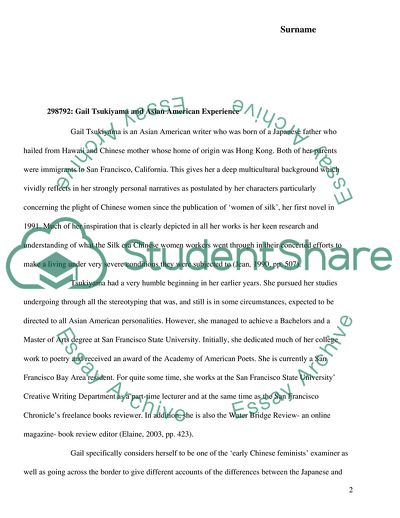Cite this document
(Gail Tsukiyama and Asian American Experience, Sensitivity, and Coursework Example | Topics and Well Written Essays - 1250 words, n.d.)
Gail Tsukiyama and Asian American Experience, Sensitivity, and Coursework Example | Topics and Well Written Essays - 1250 words. https://studentshare.org/social-science/1724060-gail-tsukiyama-and-asian-american-experience-sensitivity-and-personality
Gail Tsukiyama and Asian American Experience, Sensitivity, and Coursework Example | Topics and Well Written Essays - 1250 words. https://studentshare.org/social-science/1724060-gail-tsukiyama-and-asian-american-experience-sensitivity-and-personality
(Gail Tsukiyama and Asian American Experience, Sensitivity, and Coursework Example | Topics and Well Written Essays - 1250 Words)
Gail Tsukiyama and Asian American Experience, Sensitivity, and Coursework Example | Topics and Well Written Essays - 1250 Words. https://studentshare.org/social-science/1724060-gail-tsukiyama-and-asian-american-experience-sensitivity-and-personality.
Gail Tsukiyama and Asian American Experience, Sensitivity, and Coursework Example | Topics and Well Written Essays - 1250 Words. https://studentshare.org/social-science/1724060-gail-tsukiyama-and-asian-american-experience-sensitivity-and-personality.
“Gail Tsukiyama and Asian American Experience, Sensitivity, and Coursework Example | Topics and Well Written Essays - 1250 Words”. https://studentshare.org/social-science/1724060-gail-tsukiyama-and-asian-american-experience-sensitivity-and-personality.


